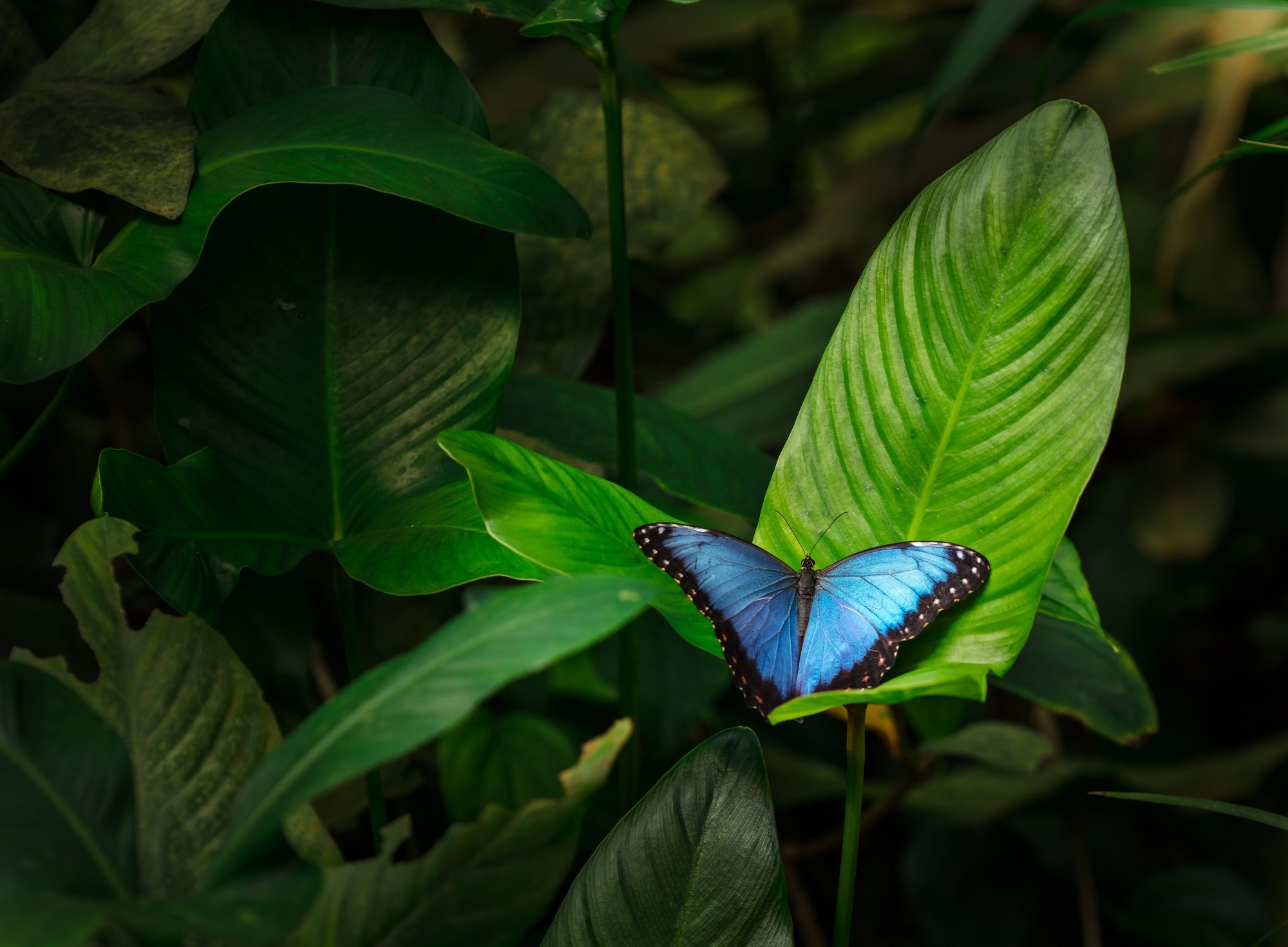Reviewed by Mila PereraSep 13 2022
Laser radiation can be used by researchers to print small structures with high precision. This approach allows them to emulate animal and plant superpowers and make them available for engineering purposes.

Image Credit: Shutterstock.com/Lukas Gojda
Several animals and plants have developed extraordinary powers to survive in harsh environments. Their capabilities are usually based on the exceptional qualities of their surfaces.
By mimicking these features, this process could provide engineers with significant promise for creating new products and resolving technological issues. Researchers from Kiel and Bochum have used two-photon polymerization (2PP), a highly accurate 3D printing technique, to successfully imitate the structural color of the well-known blue Morpho butterflies.
The study was published on September 2nd, 2022, in the Journal of Optical Microsystems.
Researchers from the “Functional Morphology and Biomechanics” group at Kiel University (CAU), led by Professor Stanislav Gorb, and the “Applied Laser Technologies” group at Ruhr-Universität Bochum (RUB), led by Professors Andreas Ostendorf and Cemal Esen, performed the research in the field of biomimetics.
3D Printing of Biologically Inspired Christmas Trees
A laser-based printing technology called 2PP enables the three-dimensional processing of photosensitive polymers. Thus, unlike traditional printing methods, complex and genuine 3D structures can be produced utilizing virtual computer models without the use of support structures.
Furthermore, 2PP allows for excellent resolution because individual structural elements can be measured accurately to a size of 100 nm. This amount is roughly equivalent to one-thousandth of the width of a human hair.
The researchers were able to create hierarchically constructed objects at the micro- and nanometer scale because of the 3D printing abilities of 2PP. They could imitate the structural color of the blue Morpho butterflies in addition to their remarkable optical qualities.
Tiny Christmas tree-like features on the upper wing surface give butterflies their distinctive color. Additionally, due to intricate physical interactions between light and these strangely shaped features, it is feasible to observe the color blue as nearly angle-insensitive.
This is very surprising because normally structural color appears iridescent like a rainbow when it is generated by similar physical phenomena, such as refraction, for example.
Gordon Zyla, Researcher, Ruhr-Universität Bochum
Biologically Inspired Structural Colours for Anti-Counterfeiting Applications
The researchers successfully redesigned their butterfly-inspired structures from previous works, which they demonstrated in their most recent study. Thanks to the redesigns, they could now notice the resulting angle-insensitive blue color uniformly or exclusively from specific directions.
They started by examining the optical characteristics and morphology of a Morpho didius butterfly’s wing surface at CAU. Based on their research, they concluded that by altering the geometry of their hierarchically constructed structures only on the microscale while still imitating the butterfly’s structures on the nanoscale, they could manipulate the direction in which the angle-insensitive color appears.
The researchers’ innovative designs can be used to manufacture highly sophisticated anti-counterfeiting features, for instance. Overall, their research shows the 2PP technology’s enormous potential for usage in biomimetics. The authors are assuming that 2PP, in combination with new photosensitive materials, can be used to imitate a wide range of functional structures seen in nature.
As a result, the ability of other organisms could be utilized for other engineering purposes. Superhydrophobicity, also known as the lotus effect, or other colorations utilized in nature as warning signs, camouflage, or intrasexual communication, increased adherence, and wear resistance to diverse surfaces are a few examples.
Journal Reference
Zyla, G., et al. (2022) Two-photon polymerization as a potential manufacturing tool for biomimetic engineering of complex structures found in nature. Journal of Optical Microsystems. doi.org/10.1117/1.JOM.2.3.031203.